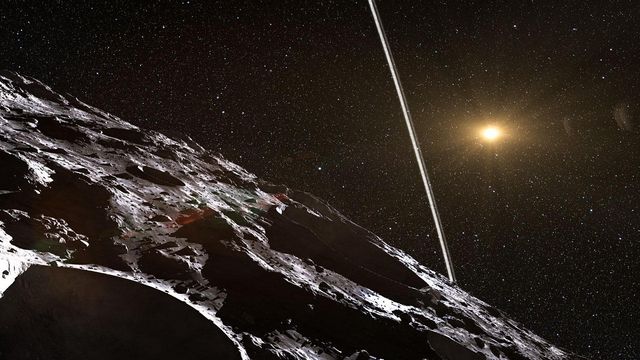Brazilian researchers discover asteroid with rings
The European Southern Observatory announced this week the discovery of rings around an asteroid 1.4 billion miles from Earth.
Posted — UpdatedThe European Southern Observatory announced this week the discovery of rings around an asteroid 1.4 billion miles from Earth. Chariklo is the largest of the class of asteroids orbiting the sun between Saturn and Uranus known as Centaurs. Results were published online today in the journal Nature.
Rings are not an unusual feature in the solar system. Each of the outer planets: Jupiter, Uranus, Neptune and of course Saturn have rings. However Chariklo is the smallest ringed body found to date.
Just 160 miles wide, Chariklo's ring system spans 12 miles with a five-mile gap between two dense rings.
"We weren't looking for a ring and didn't think small bodies like Chariklo had them at all, so the discovery – and the amazing amount of detail we saw in the system – came as a complete surprise!" says Felipe Braga-Ribas (Observatório Nacional/MCTI) author of the paper.
Researchers observed Chariklo during a June 2013 occultation visible only from South America. As the asteroid passed in front of star UCAC4 248-108672, the star's brightness dimmed as expected. However it also dimmed seconds before and after. Comparisons of observations made from seven telescopes allowed researchers to construct a detailed view of the asteroid as well as the shape, width and orientation of the rings.
The discovery was made through observations using telescopes across South America. The University of North Carolina at Chapel Hill’s Panchromatic Robotic Optical Monitoring and Polarimetry Telescopes (PROMPT) in Chile contributed to the effort.
PROMPT telescopes normally operate automatically, gathering images of Near Earth Asteroids (NEOs) and Trans-Neptunian Object (TNOs) for study at UNC and beyond. For this event, UNC postdoctoral researcher Dr. Aaron LaCluyze took over manual control of the telescopes during the brief window when the asteroid passed in front of the star.
"When you download an image from an astronomical camera, there is a break in time when the camera is not exposing. If the occultation is going on during that ‘gap,' you can miss it,” explained LaCluyze. "Since we have several telescopes, we can have them all looking at the same spot, and stagger the exposures so that at any given moment, at least one telescope is observing."
The process was further sped up by downloading only the most important portions of the image to eliminate gaps in observations. This unique approach, along with a little luck, allowed PROMPT to be one of the few telescopes to image both the asteroid and its rings.
The rings, provisionally named Oiapoque and Chuí for rivers in Brazil, may be debris created by a past collision.
"So, as well as the rings, it's likely that Chariklo has at least one small moon still waiting to be discovered," added Ribas.
• Credits
Copyright 2024 by Capitol Broadcasting Company. All rights reserved. This material may not be published, broadcast, rewritten or redistributed.





